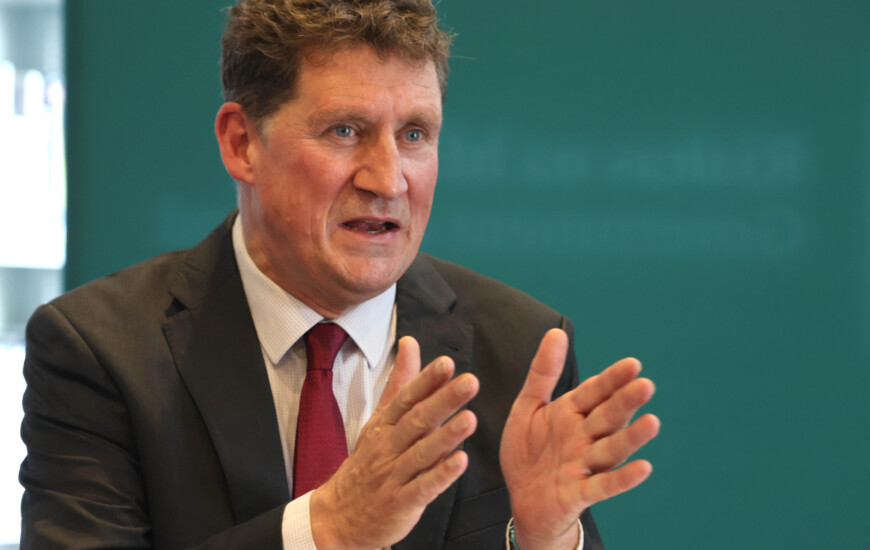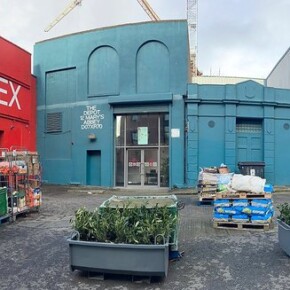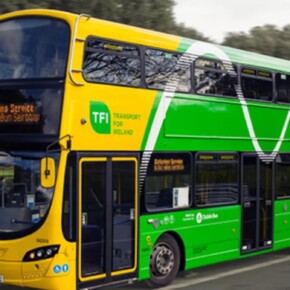Uncharted waters for Greens as Ryan and Martin bow out
Mike Finnerty 26 Jun 2024
After a poor set of election results, a party leader usually falls on their sword.
Michael Noonan in 2002, Eamon Gilmore in 2014, now Eamon Ryan and Catherine Martin have followed suit in 2024.
As Led Zeppelin once sang, the song remains the same.
Ryan will not be running in the next general election in Dublin Bay South in order to devote more time to family commitments, while Martin has stepped away from her brief as deputy leader of the Greens.
It is a tale as old as time; the smaller party in the coalition gets punished in an election and the party decides a change-up is needed.
The local and European elections were a bruising affair for the Greens, losing both of their European seats, with their Dublin-wide results seeing them lose seats on Dublin City Council, drop 10% in first preferences in Dún Laoghaire-Rathdown Council compared to 2019, were reduced to just one seat on Fingal County Council, and were entirely wiped out on South Dublin County Council.
Nationwide, the party went from 49 seats in the 2019 locals, before sliding to 23 in 2024.
For Ryan’s part, he is adamant that his mind was made up before election season and the results had no bearing on his decision.
The Dublin Bay South TD revealed that online abuse towards him has increased over the last year, including comments made about his deceased father.
Ryan’s resignation was made more surprising by Catherine Martin announcing she was stepping back from her role as deputy leader of the party in order to focus on her Ministerial and TD workload.
Martin came within 50 votes of beating Ryan to the party leadership in 2020 and represented the more left-liberal side of the party, in contrast to Ryan’s more pragmatic approach.
Like most European Green parties, there is a distinct “realist” and a distinct “fundamentalist” faction within the Greens.
In this context, Ryan represented the “realist” wing and Martin represented the “fundamentalist” wing.
The “fundamentalist” wing was a major driving force in the Just Transition wing of the party being established in 2020 by TD Neasa Hourigan, which strives to ensure the costs and practicalities involved with battling climate change are fair to the average worker.
Hourigan, since this article has appeared in print, has declared her candidacy for deputy leader.
The formation of Rabharta in early 2021 saw two councillors (one in Tallaght, one in Cork) express frustration with what they saw as the Greens propping up a Fine Gael/Fianna Fáil led government and were explicitly left-wing in their approach.
The party has been left without any elected representation following June’s local elections which is one less thing for the Greens to worry about, but that will merely serve as a brief reprieve.
The loss of Ciáran Cuffe’s seat highlighted just how vulnerable the Greens have become amongst their own Dublin base – after topping the poll in 2019 with 17.5% of first preferences, Cuffe slid to 8.6%.
Since being formed in 1981, the Greens have always had a leader from Dublin.
Trevor Sargent became the first leader of the party in 2001, followed by John Gormley succeeding him in 2007 and Eamon Ryan taking charge in 2011.
The party never having a leader from outside Dublin is a major factor in Mayo Senator Pippa Hackett announcing her candidacy for the leadership, but she faces competition from Dublin West TD and Minister Roderic O’Gorman.
O’Gorman has received the most endorsements from elected Green councillors and TDs, and is the most high-profile candidate to declare their interest in running.
The results of the race will be revealed on July 4, but the next week or so will be important in deciding what directions the Greens go in.
Green Party rules state that a leadership election must happen within six months of a general election campaign, so whoever succeeds in this summer’s leadership race will in all likelihood have to repeat the same process before Christmas (and likely coming off a general election defeat).
Ryan was Minister for the Environment during the ill-fated 2007 to 2011 government before regaining the role following the 2020 general election, and also took on the brief of Minister for Transport.
Martin’s time as Minister for Media and a myriad of other departments has been overshadowed by the RTÉ scandal, which played out for the three years she was in charge of the Media brief.
Martin insisted to the Irish Independent that the RTÉ scandal did not hurt her leadership chances, but the fact of the matter is that is what she is known for to the public at large.
Substantial achievements overseen by Martin in her tenure as Minister, such as bringing in a basic universal income trial for artists and Ireland securing its first-ever Oscar nomination for an Irish language film, have become background noise.
At present, eight of the 12 Green TDs are from Dublin constituencies which could leave them vulnerable in a general election campaign.
The Green cohort on Dublin City Council pulled out of a proposed left-wing alliance on Dublin City Council consisting of them, Labour, Sinn Féin and the Social Democrats, which implies the current cohort of Green councillors in Dublin has no interest in joining up with other so-called “progressive” parties.
Instead, it will be Fianna Fáil, Fine Gael, Labour and the Greens that will be running Dublin City Council for the next five years.
South-West Inner City councillor Michael Pidgeon said the agreement was “rooted in practical delivery,” which could be read as the realist wing of the party winning out over the more fundamental wing.
As recently as last December, Ryan said he was “open” to the idea of taking part in a Sinn Féin-led government, but based on the most recent round of horse-trading between the parties there is some significant distance between the parties on issues such as taxation and climate.
More recently however, Roderic O’Gorman has said he is “open” to an alliance between his party, Labour and the Social Democrats after the next general election.
The combined vote share of Labour, the Greens and the Social Democrats in June’s local elections reached 12.3% nationally, more than Sinn Féin’s 11.8%.
On Dublin City Council, the combined vote share of the three parties hit 27.2%, enough for 22 seats.
The Greens were punished at the polls at the 2009 local elections for taking part in a Fianna Fáil coalition and the polls imply they were similarly punished for acting as a “mudguard” to a Fianna Fáil and Fine Gael-led government.
The party were entirely wiped out on Dublin City Council, South Dublin County Council and Dún Laoghaire County Council in 2009 – 2024 wasn’t quite as dramatic for the Greens, but it is a clear warning shot from the electorate.
The hammering received by the Greens during the 2009 locals served as a prelude to their 2011 electoral wipeout.
Following the most recent rounds of results, where the Greens are still relatively healthy on Dublin City Council with their eight seats, there isn’t a lot of time left for the Greens to rediscover their identity and stave off a similar 2011-style extinction.
A general election must take place within the next year (despite numerous government TDs stating otherwise, it is becoming blatantly apparent an October or November general election is on the cards) so similar to Sinn Féin, the Greens have scant time to get the show back on the road.
In economics, there is a lot of talk of “the squeezed middle”, and it appears the Greens now occupy a similar space in Irish politics.











